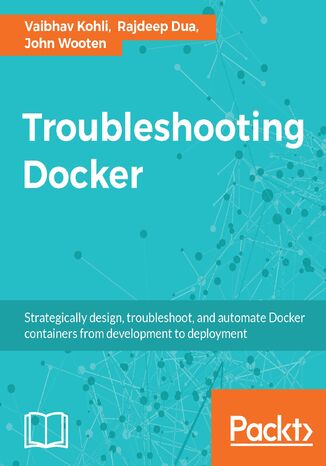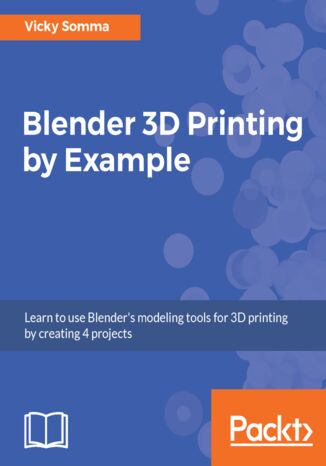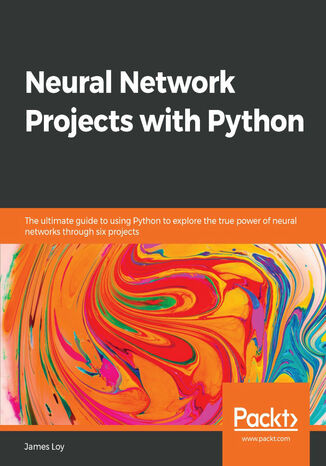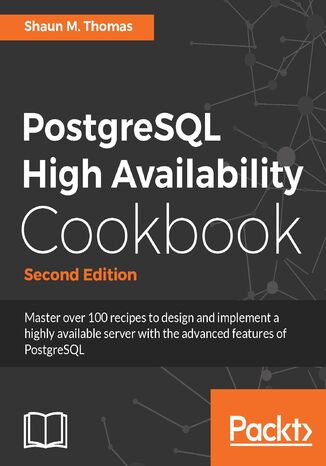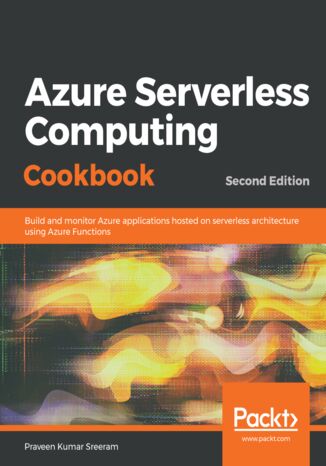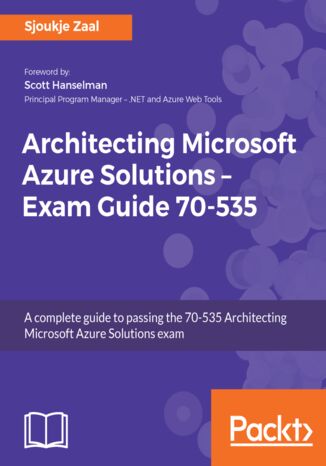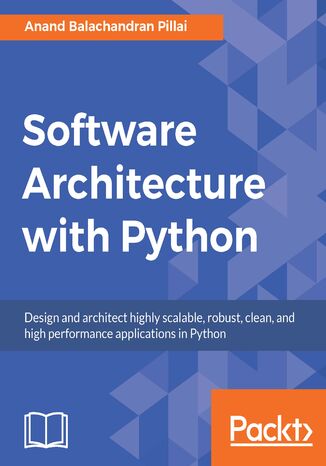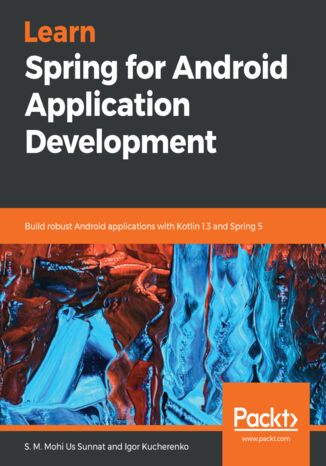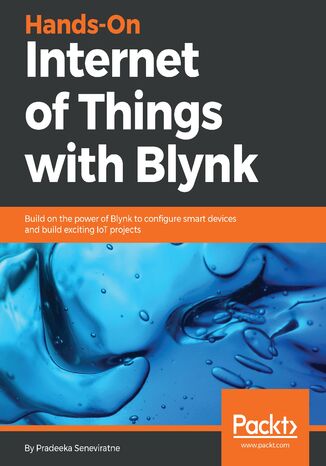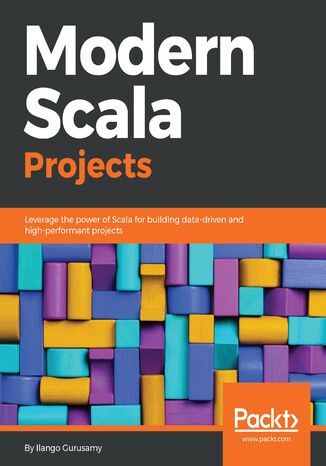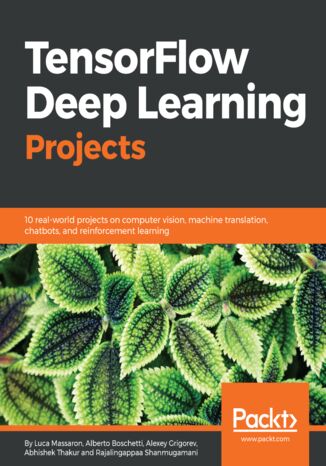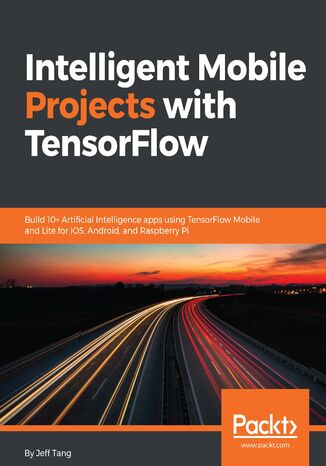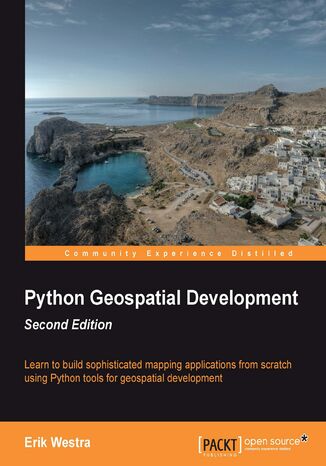Categories
Ebooks
-
Business and economy
- Bitcoin
- Businesswoman
- Coaching
- Controlling
- E-business
- Economy
- Finances
- Stocks and investments
- Personal competence
- Computer in the office
- Communication and negotiation
- Small company
- Marketing
- Motivation
- Multimedia trainings
- Real estate
- Persuasion and NLP
- Taxes
- Social policy
- Guides
- Presentations
- Leadership
- Public Relation
- Reports, analyses
- Secret
- Social Media
- Sales
- Start-up
- Your career
- Management
- Project management
- Human Resources
-
For children
-
For youth
-
Education
-
Encyclopedias, dictionaries
-
E-press
- Architektura i wnętrza
- Health and Safety
- Biznes i Ekonomia
- Home and garden
- E-business
- Ekonomia i finanse
- Esoterecism
- Finances
- Personal finance
- Business
- Photography
- Computer science
- HR & Payroll
- For women
- Computers, Excel
- Accounts
- Culture and literature
- Scientific and academic
- Environmental protection
- Opinion-forming
- Education
- Taxes
- Travelling
- Psychology
- Religion
- Agriculture
- Book and press market
- Transport and Spedition
- Healthand beauty
-
History
-
Computer science
- Office applications
- Data bases
- Bioinformatics
- IT business
- CAD/CAM
- Digital Lifestyle
- DTP
- Electronics
- Digital photography
- Computer graphics
- Games
- Hacking
- Hardware
- IT w ekonomii
- Scientific software package
- School textbooks
- Computer basics
- Programming
- Mobile programming
- Internet servers
- Computer networks
- Start-up
- Operational systems
- Artificial intelligence
- Technology for children
- Webmastering
-
Other
-
Foreign languages
-
Culture and art
-
School reading books
-
Literature
- Antology
- Ballade
- Biographies and autobiographies
- For adults
- Dramas
- Diaries, memoirs, letters
- Epic, epopee
- Essay
- Fantasy and science fiction
- Feuilletons
- Work of fiction
- Humour and satire
- Other
- Classical
- Crime fiction
- Non-fiction
- Fiction
- Mity i legendy
- Nobelists
- Novellas
- Moral
- Okultyzm i magia
- Short stories
- Memoirs
- Travelling
- Narrative poetry
- Poetry
- Politics
- Popular science
- Novel
- Historical novel
- Prose
- Adventure
- Journalism, publicism
- Reportage novels
- Romans i literatura obyczajowa
- Sensational
- Thriller, Horror
- Interviews and memoirs
-
Natural sciences
-
Social sciences
-
School textbooks
-
Popular science and academic
- Archeology
- Bibliotekoznawstwo
- Cinema studies
- Philology
- Polish philology
- Philosophy
- Finanse i bankowość
- Geography
- Economy
- Trade. World economy
- History and archeology
- History of art and architecture
- Cultural studies
- Linguistics
- Literary studies
- Logistics
- Maths
- Medicine
- Humanities
- Pedagogy
- Educational aids
- Popular science
- Other
- Psychology
- Sociology
- Theatre studies
- Theology
- Economic theories and teachings
- Transport i spedycja
- Physical education
- Zarządzanie i marketing
-
Guides
-
Game guides
-
Professional and specialist guides
-
Law
- Health and Safety
- History
- Road Code. Driving license
- Law studies
- Healthcare
- General. Compendium of knowledge
- Academic textbooks
- Other
- Construction and local law
- Civil law
- Financial law
- Economic law
- Economic and trade law
- Criminal law
- Criminal law. Criminal offenses. Criminology
- International law
- International law
- Health care law
- Educational law
- Tax law
- Labor and social security law
- Public, constitutional and administrative law
- Family and Guardianship Code
- agricultural law
- Social law, labour law
- European Union law
- Industry
- Agricultural and environmental
- Dictionaries and encyclopedia
- Public procurement
- Management
-
Tourist guides and travel
- Africa
- Albums
- Southern America
- North and Central America
- Australia, New Zealand, Oceania
- Austria
- Asia
- Balkans
- Middle East
- Bulgary
- China
- Croatia
- The Czech Republic
- Denmark
- Egipt
- Estonia
- Europe
- France
- Mountains
- Greece
- Spain
- Holand
- Iceland
- Lithuania
- Latvia
- Mapy, Plany miast, Atlasy
- Mini travel guides
- Germany
- Norway
- Active travelling
- Poland
- Portugal
- Other
- Przewodniki po hotelach i restauracjach
- Russia
- Romania
- Slovakia
- Slovenia
- Switzerland
- Sweden
- World
- Turkey
- Ukraine
- Hungary
- Great Britain
- Italy
-
Psychology
- Philosophy of life
- Kompetencje psychospołeczne
- Interpersonal communication
- Mindfulness
- General
- Persuasion and NLP
- Academic psychology
- Psychology of soul and mind
- Work psychology
- Relacje i związki
- Parenting and children psychology
- Problem solving
- Intellectual growth
- Secret
- Sexapeal
- Seduction
- Appearance and image
- Philosophy of life
-
Religion
-
Sport, fitness, diets
-
Technology and mechanics
Audiobooks
-
Business and economy
- Bitcoin
- Businesswoman
- Coaching
- Controlling
- E-business
- Economy
- Finances
- Stocks and investments
- Personal competence
- Communication and negotiation
- Small company
- Marketing
- Motivation
- Real estate
- Persuasion and NLP
- Taxes
- Social policy
- Guides
- Presentations
- Leadership
- Public Relation
- Secret
- Social Media
- Sales
- Start-up
- Your career
- Management
- Project management
- Human Resources
-
For children
-
For youth
-
Education
-
Encyclopedias, dictionaries
-
E-press
-
History
-
Computer science
-
Other
-
Foreign languages
-
Culture and art
-
School reading books
-
Literature
- Antology
- Ballade
- Biographies and autobiographies
- For adults
- Dramas
- Diaries, memoirs, letters
- Epic, epopee
- Essay
- Fantasy and science fiction
- Feuilletons
- Work of fiction
- Humour and satire
- Other
- Classical
- Crime fiction
- Non-fiction
- Fiction
- Mity i legendy
- Nobelists
- Novellas
- Moral
- Okultyzm i magia
- Short stories
- Memoirs
- Travelling
- Poetry
- Politics
- Popular science
- Novel
- Historical novel
- Prose
- Adventure
- Journalism, publicism
- Reportage novels
- Romans i literatura obyczajowa
- Sensational
- Thriller, Horror
- Interviews and memoirs
-
Natural sciences
-
Social sciences
-
Popular science and academic
-
Guides
-
Professional and specialist guides
-
Law
-
Tourist guides and travel
-
Psychology
- Philosophy of life
- Interpersonal communication
- Mindfulness
- General
- Persuasion and NLP
- Academic psychology
- Psychology of soul and mind
- Work psychology
- Relacje i związki
- Parenting and children psychology
- Problem solving
- Intellectual growth
- Secret
- Sexapeal
- Seduction
- Appearance and image
- Philosophy of life
-
Religion
-
Sport, fitness, diets
-
Technology and mechanics
Videocourses
-
Data bases
-
Big Data
-
Biznes, ekonomia i marketing
-
Cybersecurity
-
Data Science
-
DevOps
-
For children
-
Electronics
-
Graphics/Video/CAX
-
Games
-
Microsoft Office
-
Development tools
-
Programming
-
Personal growth
-
Computer networks
-
Operational systems
-
Software testing
-
Mobile devices
-
UX/UI
-
Web development
-
Management
Podcasts
Troubleshooting Docker. Develop, test, automate, and deploy production-ready Docker containers
Vaibhav Kohli, Rajdeep Dua, John Wooten
You?re pro Docker? You?ve read all about orchestration with Docker in books? Now learn how to troubleshoot Docker in practice. Gain all the tools to safely see Docker in action with this 2017 book.
Blender is an open-source modeling and animation program popular in the 3D printing community. 3D printing brings along different considerations than animation and virtual reality.This book walks you through four projects to learn using Blender for 3D Printing, giving you information that you need to know to create high-quality 3D printed objects.The book starts with two jewelry projects-- a pendant of a silhouette and a bracelet with custom text. We then explore architectural modeling as you learn to makes a figurine from photos of a home. The final project, a human hand, illustrates how Blender can be used for organic models and how colors can be added to the design.You will learn modeling for 3D printing with the help of these projects. Whether you plan to print at-home or use a service bureau, you’ll start by understanding design requirements. The book begins with simple projects to get you started with 3D modeling basics and the tools available in Blender. As the book progresses, you’ll get exposed to more robust mesh modeling techniques, modifiers, and Blender shortcuts. By the time you reach your final project, you’ll be ready for organic modeling and learning how to add colors. In the final section, you’ll learn how to check for and correct common modeling issues to ensure the 3D printer can make your idea a reality!
Neural networks are at the core of recent AI advances, providing some of the best resolutions to many real-world problems, including image recognition, medical diagnosis, text analysis, and more. This book goes through some basic neural network and deep learning concepts, as well as some popular libraries in Python for implementing them.It contains practical demonstrations of neural networks in domains such as fare prediction, image classification, sentiment analysis, and more. In each case, the book provides a problem statement, the specific neural network architecture required to tackle that problem, the reasoning behind the algorithm used, and the associated Python code to implement the solution from scratch. In the process, you will gain hands-on experience with using popular Python libraries such as Keras to build and train your own neural networks from scratch.By the end of this book, you will have mastered the different neural network architectures and created cutting-edge AI projects in Python that will immediately strengthen your machine learning portfolio.
PostgreSQL High Availability Cookbook. Managing a reliable PostgreSQL database - Second Edition
Databases are nothing without the data they store. In the event of a failure - catastrophic or otherwise - immediate recovery is essential. By carefully combining multiple servers, it’s even possible to hide the fact a failure occurred at all.From hardware selection to software stacks and horizontal scalability, this book will help you build a versatile PostgreSQL cluster that will survive crashes, resist data corruption, and grow smoothly with customer demand. It all begins with hardware selection for the skeleton of an efficient PostgreSQL database cluster. Then it’s on to preventing downtime as well as troubleshooting some real life problems that administrators commonly face. Next, we add database monitoring to the stack, using collectd, Nagios, and Graphite. And no stack is complete without replication using multiple internal and external tools, including the newly released pglogical extension. Pacemaker or Raft consensus tools are the final piece to grant the cluster the ability to heal itself. We even round off by tackling the complex problem of data scalability.This book exploits many new features introduced in PostgreSQL 9.6 to make the database more efficient and adaptive, and most importantly, keep it running.
Building Bots with Microsoft Bot Framework. Creating intelligent conversational interfaces
Bots help users to use the language as a UI and interact with the applications from any platform. This book teaches you how to develop real-world bots using Microsoft Bot Framework.The book starts with setting up the Microsoft Bot Framework development environment and emulator, and moves on to building the first bot using Connector and Builder SDK. Explore how to register, connect, test, and publish your bot to the Slack, Skype, and Facebook Messenger platforms. Throughout this book, you will build different types of bots from simple to complex, such as a weather bot, a natural speech and intent processing bot, an Interactive Voice Response (IVR) bot for a bank, a facial expression recognition bot, and more from scratch. These bots were designed and developed to teach you concepts such as text detection, implementing LUIS dialogs, Cortana Intelligence Services, third-party authentication, Rich Text format, Bot State Service, and microServices so you can practice working with the standard development tools such as Visual Studio, Bot Emulator, and Azure.
OpenStack Networking is a pluggable, scalable, and API-driven system to manage physical and virtual networking resources in an OpenStack-based cloud. Like other core OpenStack components, OpenStack Networking can be used by administrators and users to increase the value and maximize the use of existing datacenter resources. This third edition of Learning OpenStack Networking walks you through the installation of OpenStack and provides you with a foundation that can be used to build a scalable and production-ready OpenStack cloud.In the initial chapters, you will review the physical network requirements and architectures necessary for an OpenStack environment that provide core cloud functionality. Then, you’ll move through the installation of the new release of OpenStack using packages from the Ubuntu repository. An overview of Neutron networking foundational concepts, including networks, subnets, and ports will segue into advanced topics such as security groups, distributed virtual routers, virtual load balancers, and VLAN tagging within instances.By the end of this book, you will have built a network infrastructure for your cloud using OpenStack Neutron.
Building Applications with Spring 5 and Vue.js 2, with its practical approach, helps you become a full-stack web developer. As well as knowing how to write frontend and backend code, a developer has to tackle all problems encountered in the application development life cycle – starting from the simple idea of an application, to the UI and technical designs, and all the way to implementation, testing, production deployment, and monitoring. With the help of this book, you'll get to grips with Spring 5 and Vue.js 2 as you learn how to develop a web application. From the initial structuring to full deployment, you’ll be guided at every step of developing a web application from scratch with Vue.js 2 and Spring 5. You’ll learn how to create different components of your application as you progress through each chapter, followed by exploring different tools in these frameworks to expedite your development cycle. By the end of this book, you’ll have gained a complete understanding of the key design patterns and best practices that underpin professional full-stack web development.
Praveen Kumar Sreeram, Jason Marston
Microsoft provides a solution for easily running small segments of code in the cloud with Azure Functions. The second edition of Azure Serverless Computing Cookbook starts with intermediate-level recipes on serverless computing along with some use cases demonstrating the benefits and key features of Azure Functions. You’ll explore the core aspects of Azure Functions, such as the services it provides, how you can develop and write Azure Functions, and how to monitor and troubleshoot them.As you make your way through the chapters, you’ll get practical recipes on integrating DevOps with Azure Functions, and providing continuous integration and continuous deployment with Azure DevOps. This book also provides hands-on, step-by-step tutorials based on real-world serverless use cases to guide you through configuring and setting up your serverless environments with ease. You will also learn how to build solutions for complex, real-world, workflow-based scenarios quickly and with minimal code using Durable Functions. In the concluding chapters, you will ensure enterprise-level security within your serverless environment. The most common tips and tricks that you need to be aware of when working with Azure Functions on production environments will also be covered in this book.By the end of this book, you will have all the skills required for working with serverless code architecture, providing continuous delivery to your users.
Architecting Microsoft Azure Solutions: Exam Guide 70-535 will get Azure architects and developers up-to-date with the latest updates on Azure from an architecture and design perspective. The book includes all the topics that are still relevant from the previous 70-534 exam, and is updated with latest topics covered, including Artificial Intelligence, IoT, and architecture styles.This exam guide is divided into six parts, where the first part will give you a good understanding of how to design a compute infrastructure. It also dives into designing networking and data implementations. You will learn about designing solutions for Platform Service and operations. Next, you will be able to secure your resources and data, as well as design a mechanism for governance and policies. You will also understand the objective of designing solutions for Platform Services, by covering Artificial Intelligence, IoT, media services, and messaging solution concepts. Finally, you will cover the designing for operations objective. This objective covers application and platform monitoring, as well as designing alerting strategies and operations automation strategies. By the end of the book, you’ll have met all of the exam objectives, and will have all the information you need to ace the 70-535 exam. You will also have become an expert in designing solutions on Microsoft Azure.
This book starts by explaining how Python fits into an application's architecture. As you move along, you will get to grips with architecturally significant demands and how to determine them. Later, you’ll gain a complete understanding of the different architectural quality requirements for building a product that satisfies business needs, such as maintainability/reusability, testability, scalability, performance, usability, and security.You will also use various techniques such as incorporating DevOps, continuous integration, and more to make your application robust. You will discover when and when not to use object orientation in your applications, and design scalable applications.The focus is on building the business logic based on the business process documentation, and understanding which frameworks to use and when to use them. The book also covers some important patterns that should be taken into account while solving design problems, as well as those in relatively new domains such as the Cloud.By the end of this book, you will have understood the ins and outs of Python so that you can make critical design decisions that not just live up to but also surpassyour clients’ expectations.
S. M. Mohi Us Sunnat, Igor Kucherenko
As the new official language for Android, Kotlin is attracting new as well as existing Android developers. As most developers are still working with Java and want to switch to Kotlin, they find a combination of these two appealing. This book addresses this interest by bringing together Spring, a widely used Java SE framework for building enterprise-grade applications, and Kotlin.Learn Spring for Android Application Development will guide you in leveraging some of the powerful modules of the Spring Framework to build lightweight and robust Android apps using Kotlin. You will work with various modules, such as Spring AOP, Dependency Injection, and Inversion of Control, to develop applications with better dependency management. You’ll also explore other modules of the Spring Framework, such as Spring MVC, Spring Boot, and Spring Security. Each chapter has practice exercises at the end for you to assess your learning.By the end of the book, you will be fully equipped to develop Android applications with Spring technologies.
Blynk, known as the most user-friendly IoT platform, provides a way to build mobile applications in minutes. With the Blynk drag-n-drop mobile app builder, anyone can build amazing IoT applications with minimal resources and effort, on hardware ranging from prototyping platforms such as Arduino and Raspberry Pi 3 to industrial-grade ESP8266, Intel, Sierra Wireless, Particle, Texas Instruments, and a few others.This book uses Raspberry Pi as the main hardware platform and C/C++ to write sketches to build projects. The first part of this book shows how to set up a development environment with various hardware combinations and required software. Then you will build your first IoT application with Blynk using various hardware combinations and connectivity types such as Ethernet and Wi-Fi. Then you'll use and configure various widgets (control, display, notification, interface, time input, and some advanced widgets) with Blynk App Builder to build applications. Towards the end, you will learn how to connect with and use built-in sensors on Android and iOS mobile devices. Finally you will learn how to build a robot that can be controlled with a Blynk app through the Blynk cloud and personal server.By the end of this book, you will have hands-on experience building IoT applications using Blynk.
Scala is both a functional programming and object-oriented programming language designed to express common programming patterns in a concise, readable, and type-safe way. Complete with step-by-step instructions, Modern Scala Projects will guide you in exploring Scala capabilities and learning best practices. Along the way, you'll build applications for professional contexts while understanding the core tasks and components.You’ll begin with a project for predicting the class of a flower by implementing a simple machine learning model. Next, you'll create a cancer diagnosis classification pipeline, followed by tackling projects delving into stock price prediction, spam filtering, fraud detection, and a recommendation engine. The focus will be on application of ML techniques that classify data and make predictions, with an emphasis on automating data workflows with the Spark ML pipeline API. The book also showcases the best of Scala’s functional libraries and other constructs to help you roll out your own scalable data processing frameworks.By the end of this Scala book, you’ll have a firm foundation in Scala programming and have built some interesting real-world projects to add to your portfolio.
Abhishek Thakur, Alberto Boschetti, Luca Massaron, Alexey Grigorev, ...
TensorFlow is one of the most popular frameworks used for machine learning and, more recently, deep learning. It provides a fast and efficient framework for training different kinds of deep learning models, with very high accuracy. This book is your guide to master deep learning with TensorFlow with the help of 10 real-world projects.TensorFlow Deep Learning Projects starts with setting up the right TensorFlow environment for deep learning. You'll learn how to train different types of deep learning models using TensorFlow, including Convolutional Neural Networks, Recurrent Neural Networks, LSTMs, and Generative Adversarial Networks. While doing this, you will build end-to-end deep learning solutions to tackle different real-world problems in image processing, recommendation systems, stock prediction, and building chatbots, to name a few. You will also develop systems that perform machine translation and use reinforcement learning techniques to play games.By the end of this book, you will have mastered all the concepts of deep learning and their implementation with TensorFlow, and will be able to build and train your own deep learning models with TensorFlow confidently.
As a developer, you always need to keep an eye out and be ready for what will be trending soon, while also focusing on what's trending currently. So, what's better than learning about the integration of the best of both worlds, the present and the future? Artificial Intelligence (AI) is widely regarded as the next big thing after mobile, and Google's TensorFlow is the leading open source machine learning framework, the hottest branch of AI. This book covers more than 10 complete iOS, Android, and Raspberry Pi apps powered by TensorFlow and built from scratch, running all kinds of cool TensorFlow models offline on-device: from computer vision, speech and language processing to generative adversarial networks and AlphaZero-like deep reinforcement learning. You’ll learn how to use or retrain existing TensorFlow models, build your own models, and develop intelligent mobile apps running those TensorFlow models. You'll learn how to quickly build such apps with step-by-step tutorials and how to avoid many pitfalls in the process with lots of hard-earned troubleshooting tips.
Geospatial development links your data to places on the Earth's surface. Writing geospatial programs involves tasks such as grouping data by location, storing and analyzing large amounts of spatial information, performing complex geospatial calculations, and drawing colorful interactive maps. In order to do this well, you'll need appropriate tools and techniques, as well as a thorough understanding of geospatial concepts such as map projections, datums and coordinate systems.Python Geospatial Development - Second Edition teaches you everything you need to know about writing geospatial applications using Python. No prior knowledge of geospatial concepts, tools or techniques is required. The book guides you through the process of installing and using various toolkits, obtaining geospatial data for use in your programs, and building complete and sophisticated geospatial applications in Python.Python Geospatial Development teaches you everything you need to know about writing geospatial applications using Python. No prior knowledge of geospatial concepts, tools or techniques is required. The book guides you through the process of installing and using various toolkits, obtaining geospatial data for use in your programs, and building complete and sophisticated geospatial applications in Python.This book provides an overview of the major geospatial concepts, data sources and toolkits. It teaches you how to store and access spatial data using Python, how to perform a range of spatial calculations, and how to store spatial data in a database. Because maps are such an important aspect of geospatial programming, the book teaches you how to build your own “slippy map” interface within a web application, and finishes with the detailed construction of a geospatial data editor using Geodjango.Whether you want to write quick utilities to solve spatial problems, or develop sophisticated web applications based around maps and geospatial data, this book includes everything you need to know.

